A major feature of such batteries was the efforts to render them as invisible as possible to an approaching enemy fleet. In the case of Fort DeSoto the narrow approach to the inner harbor of Tampa meant that enemy warships would have to travel a very predictable pathway when making their approach. This knowledge made it possible to employ giant mortars to deliver fire into that narrow channel in a way such that it would land on the thinly armored decks of the enemy ships.
this shows the position of the batteries in relation to the narrow entryway to Tampa Bay
please note that in all of these pictures North is on the right
image credits Google Earth
an overview picture showing the mortar batteries and,
at the top left, a badly eroded position for an Armstrong rifle
a closer view of the mortar positions
you can clearly see the circles where the missing four mortars would have been
the badly eroded remains of a concrete mounting for an Armstrong Rifle
on the seaward face of the battery
an overview of the gun positions on Edgemont Key
you can see the double gun positions to the right and left with a ranging station in the center
again North is to the right
The Batteries on Mullet Key, Laidley and Bigelow
battery Laidley consisted of eight 12" Coast Defense Mortars arranged in two groups of four guns
these were enclosed in an earth-embanked concrete battery position
only four of the original eight guns remain and they are the only such guns still on their original mounts in to USA, the other are located on Corregidor and Caballo islands in the Philippines
the mortar as seen from the top of the embankment
seaward view from the top of the embankment
Mullet Key is extremely low-lying, barely rising six feet above sea level
the uniformed staff was enthusiastic and very well-informed
he had an excellent example of a Krag-Jorgenson Rifle too!
a view into one of the bombproofs through a ventilation shaft
this is the view of the Laidley Battery from the beach
the remains of one of the smaller gun positions that was damaged by a hurricane
and abandoned by the Army in 1920, the action of the waves have undercut the foundation
and broken the concrete up rather badly
the central box shaped structure covered the ammunition storage
the dark space in the lower center is the entrance doorway
the remains of the gun-mount
the layer-cake effect is caused by the concrete being laid
in roughly 8" thick layers as the position was built
another look at Laidley Battery from the beach
to prevent foot-traffic from killing off the vegetation
and leading to erosion the park installed this footpath
at first I was puzzled by these odd green caps
then I realized that they are the ventilators for the
ammunition bombproofs buried in the embankment
the view to seaward from the top of the embankment
by leaning WAY over the railing I was able to glimpse the guns below
they were taking no chances on the ventilation for the ammunition supply
this is an observer's position to correct the shot-fall of the guns
the view down the steps gives you an idea as to how steep the embankment is
the north end of the rear of the battery
panning southward, the stairway leads up to the observer's position
the plotting room and the large entry to the magazine;
the odd box-like building with the red door was where the plots were posted to the gun crews
plots were displayed to the gun crew on the black board that folds out from the building
like this, I wonder how they chose who got to leave the safety of the
thick concrete structure to post the plotting data on that board
the stairs up to the observation post
the entryway to the magazine
notice how thick the jamb is on the doorway, the doors were very substantial
the Army wasn't kind enough to leave any shells lying about
I was told the the powder bags were passed through the window
which was equipped with a very substantial shutter
one can almost see where the Germans got the idea for their submarine pens
none of the gun mounts is complete
The Mortars
These were the primary weapons of the defensive installation. the twin four mortar batteris were arranged so that they could drop massive 12" shell onto the deck of enemy ships moving through the narrow passage into Tampa Bay. Wikipedia has a good article on the mortars .
the guns are simply massive
a view into the breach end of the gun
the manufacturer proudly inscribed their information on the muzzle
The 6" Armstrong Guns of Edgemont Key
a very nice drawing of the guns
these two guns lay untended for almost a half-century, their remarkable condition
speaks loudly to their sterling quality of construction and careful rstoration
Photos and drawings from the museum
this picture demonstrates the crowed conditions of firing the battery of guns
the concussion of firing in that limited space must have been dreadful
buildings on the base
the drawings were covered by a glossy protective panel that made photography very difficult
before the arrival of the Spanish there was a substantial Native American presence
someone went to a great deal of effort building this elevation map of the entry to Tampa Bay
due to the way the map was displayed and lit photography was very difficult
a good panoramic map of the installation
If you enjoyed this walk-around you can find several other visits to different forts on my Fortified Places tab










































































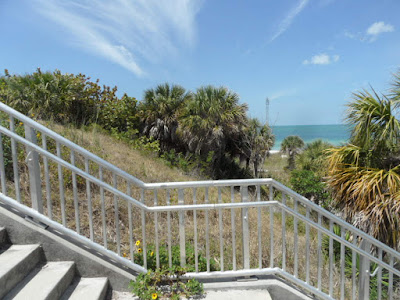




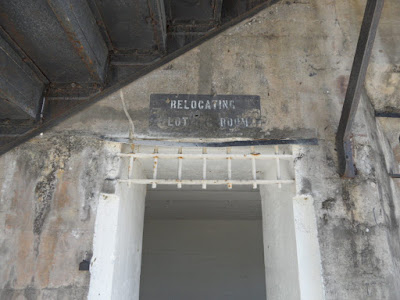











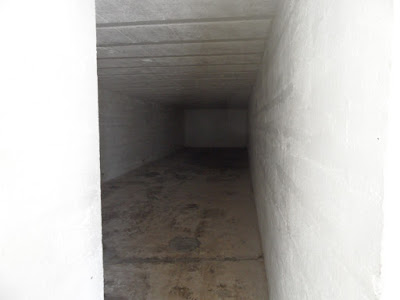










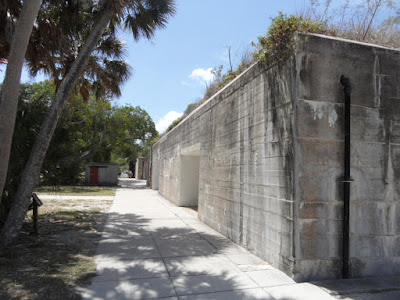





















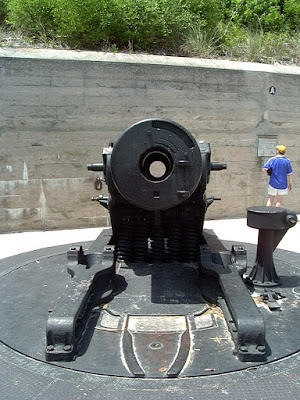





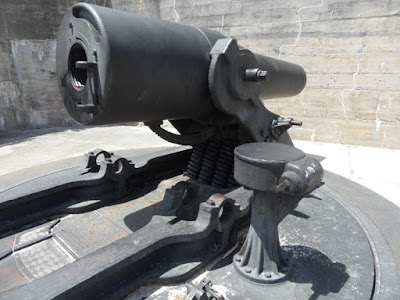



















































































Wow. What a great post!
ReplyDeleteThese fort tours are awesome. Thanks for posting them.
ReplyDeleteGreat post. Just think of all the empty coastal fort are the nation.
ReplyDeleteAnd I plan on visiting all of the ones between the Mississippi and the Canadian border (the Good Lord willing), maybe even a Fenian Raid into Canada to see a couple of the neat ones that they have.
DeleteCome over and see some of the UK ones!
DeleteEd, I would love to, the U.K. and Ireland are covered in interesting forts, you have a 2000 year head start on us newbies in the Americas
DeleteThanks for sharing. I collect the disappearing guns and the mortars from this period on postcards. I need to visit this fort for sure! I got to visit Fort Stevens in Oregon which has a disappearing gun.
ReplyDeleteOne of the Victorian forts around Portsmouth has, I believe, a restored disappearing gun, which I think is occasionally fired. Unfortunately memory fails me as to which one I think I've seen this in, so I can't confirm it!
DeleteWhat a fantastic location. Thanks for the tour!
ReplyDelete